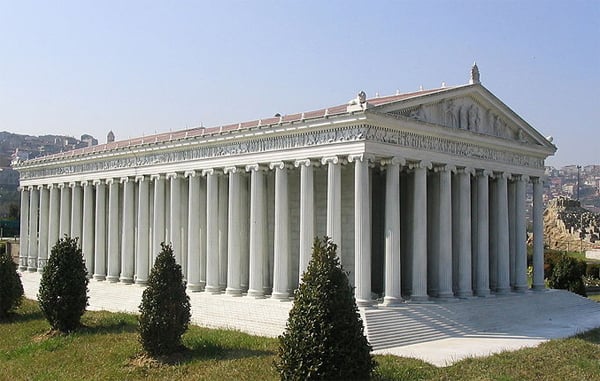Artemis the virgin goddess of hunt and the twin sister of Apollo was a revered Greek goddess who had a cultic following in ancient Greece and Turkey. The Temple of Artemis at Ephesus was built and rebuilt at least four times.
The first time it was built in 550 BC, it was destroyed by the invading army of Croesus and rebuilt by him. It was a large structure designed to astound its visitors. The people used the Temple of Artemis as both a religious place and as a center for trade.
Made primarily of highly polished marble, the temple was built on a podium with 127 columns to support the roof. The columns had carved reliefs on them. The Temple of Artemis had many works of art housed in it. It is also believed that the pillars had gold worked into them and that the temple had statues of silver and many paintings beside those statues.
Pliny the Elder, an ancient Greek historian and natural philosopher recorded that the Temple of Artemis was built on marshy land to protect it from earthquakes. However, this did not save the temple entirely from destruction. Herostratus, a man mad for fame at any cost, set the building on fire so that his name would go down in the annals of history.
The Ephesians swore never to mention his name and allow his narcissistic desire to be fulfilled. The reconstructed temple was destroyed by Goths and later due to a reduction in its number of followers, the Temple of Artemis, was left as a neglected structure to be lost in the swirl of time.
Finally in the late nineteenth century the temple was rediscovered by John Turtle Wood, an architect, who was given funding by the British Museum. The team of Wood, after a prolonged search of six years, found the entire foundation of the temple and the remains of some of the sculpted portions of the temple which can now be seen at the British Museum.
Artemis, the goddess of hunt, was hunted out of her own city and lost her temple to Christianity and the wonder, the temple of Artemis, that was once the pride of Ephesus was reduced to ruins.
